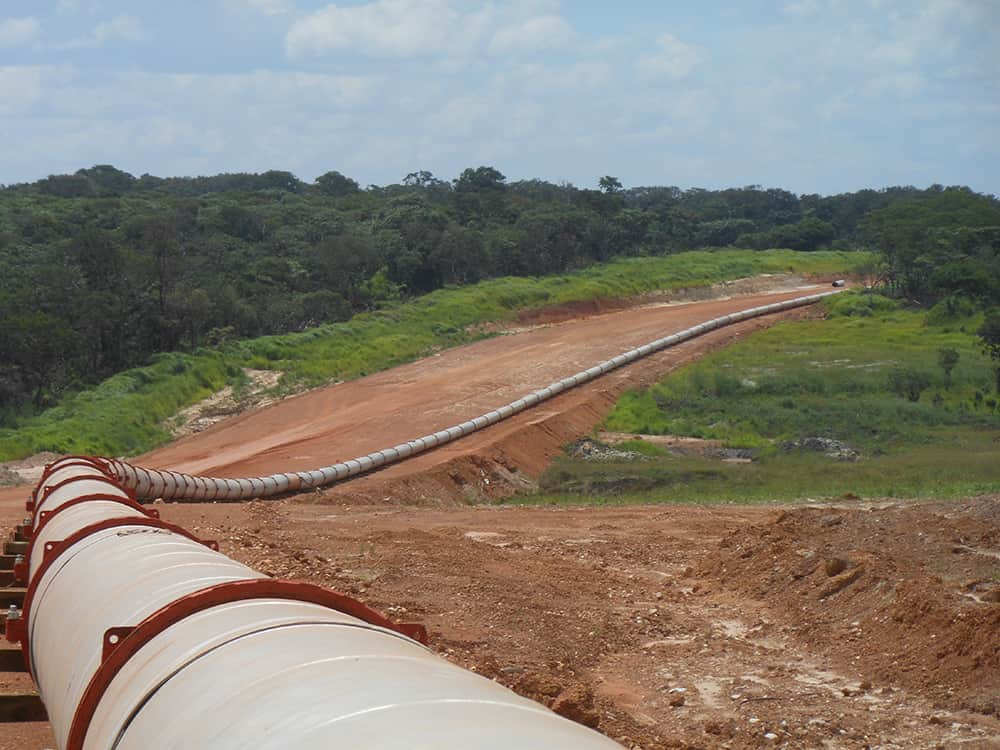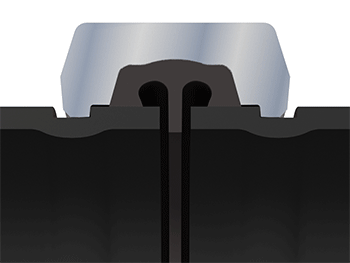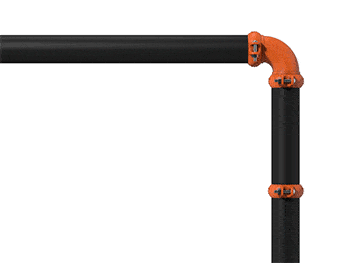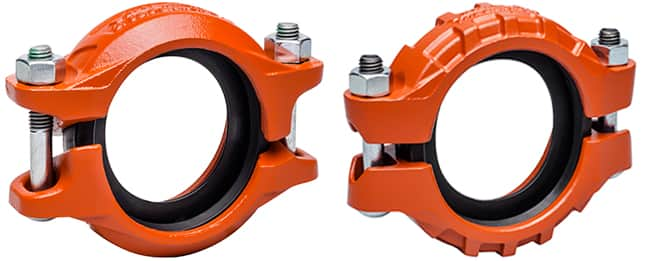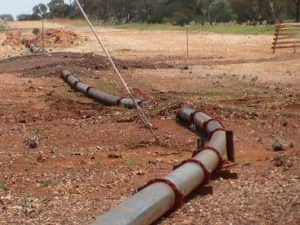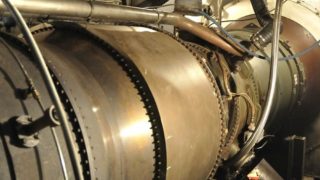Posted on October 30, 2018
Did Victaulic invent the first grooved mechanical pipe coupling?
Victaulic held the original patent (filed in 1919) for the first grooved mechanical pipe coupling as invented by Lieutenant Ernest Tribe. But what most people don’t realize is that, in the beginning, all mechanical couplings were “flexible pipe couplings.” It wasn’t until 1957 when the first grooved rigid pipe coupling was invented. Why is that important? Allow us to answer this question as well as one of our most commonly asked questions, “What is the difference between rigid and flexible pipe couplings?”
The History of Flexible Pipe Couplings
The invention of the first grooved mechanical coupling was intentionally a flexible pipe coupling. In the early 1900s, there were four prominent industries that gained benefit from an alternative pipe joining method to their rigid options and paved the way for this game-changing innovation.
Four industries in the 1900s that found a flexible pipe coupling solution to their advantage
- Mining – needed a flexible alternative to rigid threading and flanging pipe
- Oil, Gas, and Chemical – in some applications they needed a flexible alternative to rigid threaded pipe joints
- Municipal – needed a flexible alternative to rigid threading and flanging cast iron (which was the norm) as well as a lower cost option
- Ship Building – needed a flexible alternative to rigid flanging and a way to accommodate for ship movement
In the case of Municipal systems, if you are thinking that Push Joints (aka Bell and Spigot) provided a flexible pipe joining alternative during this time, you would be correct. However, Push Joints are not restrained; ok for buried systems, but not for above ground. The grooved flexible pipe coupling was the first self-restrained, flexible pipe joint solution.
In summary, the first grooved mechanical pipe coupling was a flexible pipe coupling because that’s where the most need was. It wasn’t until the late 1950s when the manufacturers of the day saw an opportunity emerging in the oil industry for a high-pressure rigid pipe coupling.
The History of Rigid Pipe Couplings
Because of the nature of flexible pipe couplings, systems that utilize a large number of them will need additional supports and ways to accommodate or prevent the linear expansion of the system when pressurized. Certain high-pressure oil applications didn’t need the flexibility, extra supports or linear expansion accommodation, but they did like the installation speed, which led to the invention of the first high-pressure, grooved rigid pipe coupling in 1957.
Jump forward to the 1980s, where we see the emergence of the first lower-pressure, grooved rigid pipe coupling designed for use on standard weight and light wall carbon steel, and with that, an opportunity arose for grooved mechanical pipe couplings within the commercial construction industry.
Two industries in the 1980s that found a rigid pipe coupling solution to their advantage
- Fire Protection – needed a reliable, rigid alternative to threading pipe as well as the same for light wall roll grooved pipe which were being joined with grooved flexible pipe couplings
- HVAC – needed a faster and safer alternative to welding and flanging pipe, with better bending performance over threading as well as changing from flexible to rigid couplings in much of the systems
What is unique about HVAC applications over other industry applications previously mentioned, is that there are value-added engineering benefits to designing these mechanical systems with both grooved rigid and flexible pipe couplings. More on that later. First, let’s answer this commonly asked question:
What is the difference between rigid and flexible pipe couplings?
- Grooved flexible pipe couplings allow for controlled linear and angular movement, which accommodates pipeline deflection as well as thermal expansion and contraction.
- In a grooved flexible pipe coupling
- Dimensions of the pipe coupling key are narrower than the groove in the pipe, providing room for the coupling key to move within the pipe groove.
- The width of the flexible pipe coupling housing allows for pipe-end separation, leaving room for controlled linear and angular movement.
- When movement forces are induced, the flexible pipe coupling remains a self-restrained joint, and the pressure-responsive gasket design provides positive sealing even during piping system movement.
- Grooved rigid pipe couplings do not allow for movement, similar to a rigid flanged or welded joint.
- Piping systems joined with grooved rigid pipe couplings have the same hanging and support requirements as rigid welding or threading, while systems installed with grooved flexible pipe couplings can be intimidating because they require more hanging and support requirements and ways to accommodate or eliminate axial expansion due to pressure.
Why is it important to understand the difference between grooved rigid and flexible pipe couplings?
It’s important to understand the difference between grooved rigid and flexible pipe couplings because while pipe couplings look similar and fit the same groove profiles, their performance is remarkably different and engineers need this information so they can design and make movement accommodations that differ from a rigid welded or threaded system.
Can you spot the flexible pipe coupling in this side by side pipe coupling comparison?
What is hard to see in the below side by side comparison of two grooved mechanical pipe couplings is much easier to spot once a series of grooved flexible pipe couplings are installed.
This now noticeable difference (in the image above) reinforces the notion that accommodations in engineering designs for mechanical piping systems must be understood and addressed appropriately.
Why should I choose to install my piping system with grooved mechanical pipe couplings vs welding, flanging, or threading?
The value that grooved flexible pipe couplings bring to a mechanical piping system is that they provide a simple, flame-free, and spark-free pipe joining method while simultaneously providing value engineering in that they act as an appropriate and effective replacement for specialty movement compensators. As a bonus, there is proof that Victaulic couplings also reduce pipe noise and pipe vibration and they do it better than traditional equipment vibration attenuation solutions. Read more about that here.
If you are looking for a faster, easier and safer way to join pipe with all of the necessary rigidity benefits, plus the added value of leveraging flexible pipe couplings as a joining method and eliminating specialty movement compensators, then you should choose to install your mechanical piping system with mechanical pipe couplings over other joinings. But if you do, remember that piping systems featuring grooved flexible pipe couplings have unique design requirements. Consult the manufacturer when needing design assistance.
Check out who is benefiting from choosing Victaulic Solutions for their mechanical piping system projects.
Piping Partnership Helps Seattle Contractor Finish Tunnel Project in Ten Weeks
Victaulic VDC Turns in NYC’s Latest Luxury Building on Budget & on Time
Victaulic Grooved Solutions Saves Time & Money on Rhode Island’s Largest Development Project
